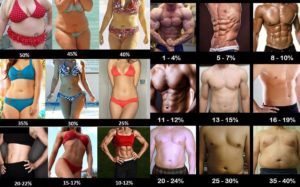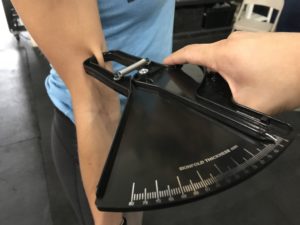I’m sure all of you have heard of the terms body fat percentage and body fat testing before, but what do they really mean? Let’s delve into a little bit of the science behind body fat and why testing it is beneficial, regardless of what your goals are.
So What is Body Fat?

Body fat is an excess storage of useable energy. In the earlier times of hunting and gathering, a next meal was not always guaranteed so fat stores helped provide energy during times of fasting. In modern society, food security isn’t as big of a problem which raises the issue of overeating. The fat gained through overeating is called subcutaneous fat. This is one of two types of fat; the other is called visceral fat which covers the organs and is also referred to as essential body fat. Subcutaneous body fat is the visible type that can be gained or lost. Visceral body fat, for the most part, does not change so any further mention of body fat will be the subcutaneous type.
The gain or loss of body fat boils down to the simple concept of calories in vs. calories out. In other words, if you consume more calories than you burn throughout a day, overtime you will gain weight; burning more calories than consuming throughout a day leads to weight loss. A surplus or deficit of 3500cals equates to 1 lb of body weight. So by the end of the week, if you had a deficit of 3500cals, you will lose 1 lb.
What is Body Fat Percentage?

Body fat percentage is the percent of your weight that is just body fat. Your body’s composition can be divided into two categories: lean body mass and body fat. Lean body mass includes everything that is not fat (bone, muscle, blood, hair, etc.), while fat consists of subcutaneous and visceral body fat (but remember, only subcutaneous body fat can be gained or lost). This can be measured in a variety of ways, the most common being skin calipers (the pinchy things). If you want the most accurate measurements, hydrostatic weighings or DEXA scans are the gold standard, but also require a scheduled appointment and much more money. Skin calipers may not be as accurate, but as long as it’s taken by the same person, can give you a good idea of where your body fat percentage is.
So Why Does This Matter to Me?

As a Crossfit athlete, there are a couple reasons why knowing your body fat percentage is beneficial. First, your goal may be getting down to a healthy weight. If your goal is to lose “weight”, checking the scale is not the best indicator. Think about it, if you’re lifting weight then you’re building muscle, which adds weight. Even though you may be burning fat, you may not see a difference on the scale weight. Water also accounts for a lot of body weight. If you were to eat more sodium than normal, you’d retain more water, thus increasing the scale weight. For these reasons, we should change our mindset to lowering our body fat percentage, NOT weight. Body fat percentage doesn’t lie. No matter how much muscle you gain, it will not skew the readings. This is the true indicator of whether you are slimming or toning up.

Performance is another reason why knowing your body fat can help. Let’s look at pull ups as an example. If you had the same amount of strength/muscle, but were 5 lbs lighter, you would most likely knock out a few more pull ups, right? Being at the lowest possible body fat percentage while still keeping strength, will improve performance across all facets of Crossfit.

Finally, we all want to look good. I know that is a relative term for everyone, but generally looking “good” consists of looking more fit and athletic. Whether people like to admit it or not, this is a big motivator, and there’s nothing wrong with that. For the most part, any motivation to workout and lose body fat is good motivation.
Well, hopefully this article helped shed some light on what body fat is, how to lose it and why it’s even important to keep track of. If you’d like to get your body fat taken, email coach Matt at mattaufitness@gmail.com to schedule an hour consultation! Have a great rest of your week y’all!
